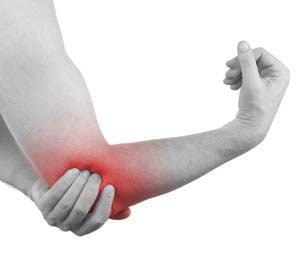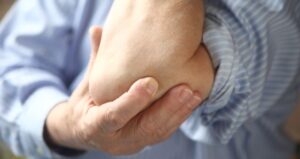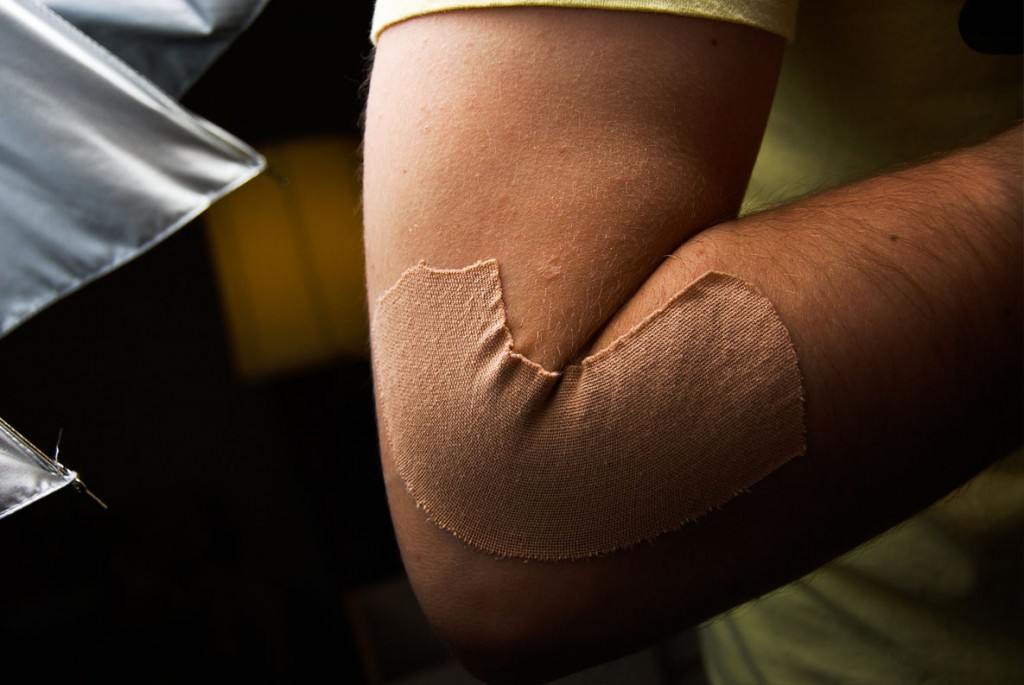Welcome to our comprehensive blog dedicated to addressing one of the most common challenges faced by climbers – Climber’s Elbow. It also known as Medial Epicondylitis, is a prevalent condition among climbers, causing discomfort and hindering performance. In this blog, we’ll dive deep into the intricacies of Climber’s Elbow, exploring its causes, effective treatment options, and essential prevention techniques to ensure you continue scaling peaks without being held back by the ache.
Contents
What Is Climber’s Elbow?
 Climber’s Elbow, also known as Medial Epicondylitis or Golfer’s Elbow, is a common overuse injury that affects climbers due to repetitive stress on the tendons and muscles of the forearm. The condition specifically targets the medial epicondyle, which is a bony prominence on the inner side of the elbow, where the wrist flexor tendons attach.
Climber’s Elbow, also known as Medial Epicondylitis or Golfer’s Elbow, is a common overuse injury that affects climbers due to repetitive stress on the tendons and muscles of the forearm. The condition specifically targets the medial epicondyle, which is a bony prominence on the inner side of the elbow, where the wrist flexor tendons attach.
As climbers engage in intense and repetitive gripping movements, the tendons in the forearm are subjected to excessive strain. Eventually, leading to micro-tears and inflammation. This, in turn, results in pain, tenderness, and discomfort on the inner side of the elbow. And, making it challenging to continue climbing at full capacity.
This is a condition that can hinder climbing performance and should not be ignored. Proper understanding, treatment, and preventative measures are essential to managing it and ensuring climbers can continue to enjoy their passion for climbing with a reduced risk of recurrence.
What Are The Common Symptoms To Know?
Common symptoms of Climber’s Elbow pain (Medial Epicondylitis) include:
- Pain and Tenderness: The most prominent symptom is pain and tenderness on the inner side of the elbow. Specifically around the medial epicondyle. The pain might vary in intensity, ranging from mild discomfort to a sharp, persistent ache.
- Weakness and Grip Difficulty: People with this condition often experience weakness in their grip strength. And, making it challenging to hold onto small holds or maintain a strong grip on climbing holds.
- Pain during Climbing Movements: The pain usually worsens with specific climbing movements that put a strain on the wrist flexor tendons. Such as crimping, pinching, or squeezing holds.
- Discomfort with Activities: Besides climbing, activities that involve gripping or lifting objects, like opening a doorknob or carrying a heavy bag, can exacerbate the pain.
- Stiffness and Limited Range of Motion: Some climbers might experience stiffness around the elbow joint. This can lead to a reduced range of motion in the affected arm.
- Pain at Rest: In more severe cases, climbers may also experience discomfort even when at rest. Especially after climbing sessions or intense physical activity.
It is important to note that these symptoms may vary in intensity from person to person. So, early recognition and appropriate management are crucial to preventing the condition from worsening.
Why Does My Tricep Elbow Hurt After Climbing?
 Experiencing tricep elbow pain after climbing can be attributed to several factors, including:
Experiencing tricep elbow pain after climbing can be attributed to several factors, including:
- Overuse and Strain
Climbing involves repetitive gripping, pulling, and holding positions. This can put significant stress on the muscles and tendons around the elbow joint, including the triceps. Over time, this repetitive strain can lead to micro-tears in the triceps tendons and muscle fibers, resulting in pain and discomfort.
- Climbing Technique
Incorrect climbing techniques, such as using excessive force with the triceps to stabilize and control movements, can place extra strain on the triceps and the elbow joint. This improper technique can lead to muscle imbalances and overloading of certain muscle groups. Including the triceps, leading to pain and potential injury.
- Climbing Intensity and Volume
Climbing too frequently without adequate rest or engaging in intense climbing sessions without proper warm-up and cooldown routines can contribute to tricep elbow pain. Insufficient recovery time between climbing sessions can prevent the triceps from fully repairing and adapting to the stress. All this will eventually lead to discomfort.
- Pre-existing Conditions
Individuals with pre-existing conditions like tendinopathies or previous injuries around the elbow might be more susceptible to experiencing tricep elbow pain after climbing, as these conditions can be exacerbated by climbing movements.
- Lack of Tricep Strength
Weak triceps might struggle to support the elbow joint during climbing movements, leading to increased strain on the tendons and muscles in the area.
- Overcompensation
In some cases, when other muscle groups (e.g., forearms) are fatigued or injured, the triceps may overcompensate to assist in gripping and holding positions. Ultimately, leading to overuse and subsequent pain.
If the pain persists or worsens, seeking medical advice from a healthcare professional or physical therapist is recommended for a proper diagnosis and personalized treatment plan.
How Do You Fix Elbow Pain From Climbing?
Fixing elbow pain from climbing requires a comprehensive approach that involves addressing the underlying causes, promoting healing, and preventing future occurrences. Here are some steps to help alleviate and prevent elbow pain:
Rest and Recovery
Give your elbow sufficient time to heal by taking a break from climbing or reducing your climbing intensity. Adequate rest allows the affected tendons and muscles to recover and reduces inflammation.
Ice and Compression
Applying ice packs to the affected area for 15-20 minutes several times a day can help reduce swelling and alleviate pain. Using a compression bandage can also aid in managing inflammation.
Stretching and Strengthening
Perform gentle stretches to improve the flexibility of the forearm muscles and tendons. Gradually introduce strengthening exercises targeting the forearm muscles, including both flexors and extensors, to support the elbow joint during climbing.
Proper Technique
Work on refining your climbing technique to minimize strain on the elbow. Focus on using open-hand grips, balanced body positioning, and avoiding excessive use of the triceps during movements.
Warm-up and Cool-down
Prioritize warming up before climbing and cooling down afterward. A dynamic warm-up increases blood flow to the muscles and prepares them for activity, while static stretches during cooldown can aid in muscle recovery.
Modify Climbing Sessions
During recovery, consider avoiding intense moves that aggravate the elbow. Choose routes with larger holds and fewer crimps to reduce stress on the tendons.
Cross-training
Engage in cross-training activities that strengthen and condition the upper body without putting direct stress on the elbows. Such as yoga, swimming, or lightweight training.
Equipment and Gear
Ensure your climbing equipment, including shoes and harness, fit properly. And provide adequate support to reduce unnecessary stress on the elbows.
Pain Management
Over-the-counter pain relievers can be used temporarily to manage pain and inflammation. However, these should not be a substitute for addressing the root cause of the pain.
Seek Professional Guidance
If the pain persists or worsens despite self-care measures, consult a healthcare professional or a sports medicine specialist. They can provide a proper diagnosis, recommend specific exercises, and design a personalized treatment plan.
Remember, the recovery process may take time. So be patient with yourself and avoid rushing back into intense climbing activities until the elbow is fully healed.
What Strategies Can Prevent The Climber’s Elbow Pain?
 The following are some tips that can prevent climber’s elbow pain:
The following are some tips that can prevent climber’s elbow pain:
1. Gradual Progression
Avoid sudden increases in climbing intensity or volume. Gradually build up your climbing sessions to allow your tendons and muscles to adapt to the stress, reducing the risk of overuse injuries like Climber’s Elbow pain.
2. Active Rest Days
Incorporate active rest days into your climbing routine. Engage in low-impact activities like walking, stretching, or gentle yoga to promote blood flow and aid in recovery without putting additional strain on the elbows.
3. Proper Nutrition
Maintain a balanced diet rich in nutrients essential for muscle and tendon health. Ensure you’re getting enough protein, vitamins, and minerals to support your body’s recovery and repair processes.
4. Correct Gear and Equipment
Invest in climbing gear that fits well and provides adequate support. Well-fitting shoes and a comfortable harness can reduce unnecessary stress on the elbows during climbs.
5. Eccentric Exercises
Include eccentric exercises in your training regimen. These exercises focus on the lengthening phase of muscle contractions. And can be beneficial for strengthening tendons and reducing the risk of injuries.
6. Listen to Your Body
Pay attention to any early signs of discomfort or pain in the elbows. If you notice any discomfort, modify your climbing style or take a break to prevent further strain.
7. Soft Tissue Massage
Consider getting regular soft tissue massages to improve blood circulation, reduce muscle tension, and promote recovery.
8. Warm up at the Crag
Before attempting challenging routes, warm up at the climbing area on easier routes or boulder problems to gradually prepare your muscles and tendons for the demands ahead.
9. Use Climbing Holds Wisely
Pay attention to your grip on holds and avoid over-gripping or crimping excessively. As this can place undue strain on the elbows. Opt for open-hand grips whenever possible.
Preventative measures are crucial for long-term injury-free climbing. So take proactive steps to care for your elbows and other vulnerable areas of your body.
Conclusion
In conclusion, Climber’s Elbow pain is a prevalent challenge that many climbers face, hindering their climbing performance and causing discomfort. However, armed with knowledge and a proactive approach, conquering this climbing crux is within reach. Remember, rest and recovery are vital components of the healing process, while proper climbing techniques, warm-up routines, and many things can help in preventing future occurrences.
Embrace a balanced approach to climbing, listen to your body’s signals, and prioritize injury prevention to ensure a sustainable and enjoyable climbing journey. With dedication and care, climbers can navigate the challenges of Climber Elbow pain and embrace the thrill of conquering new climbing horizons.
If you’re experiencing Elbow pain, physical therapy for elbow pain at PhysioMantra can help: Book an online physical therapy session.



